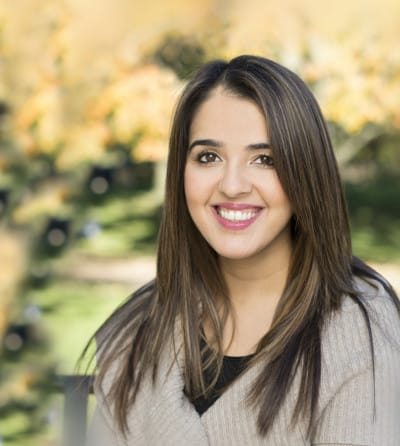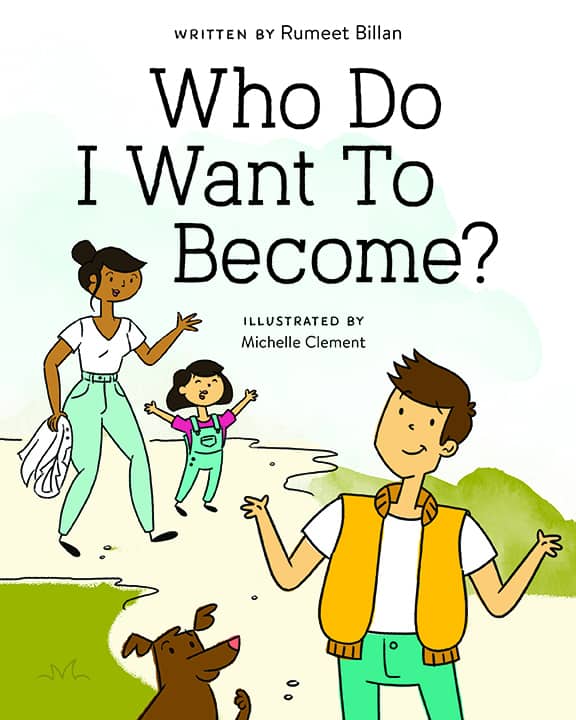Dr. Rumeet Billan is an award-winning, internationally recognized entrepreneur, learning architect and the author of Who Do I Want to Become?, which releases to the public today (October 11).
The question “What do you want to be when you grow up?” has plagued kids for generations, but career anxiety is now at an all-time high and anxiety disorders are the most common illness to affect children and youth. Dr. Billan believes the answer to greater satisfaction is to stop focusing on what we want to be (doctor, millionaire, celebrity) and instead who we want to be (kind, hard-working, creative).
We caught up with Dr. Billan this week.
SDTC: What is the message you want to drive home with your new book, Who Do I Want To Become?
RB: The main message of the book is that in order to be future-ready, we need to reframe the questions that we ask and shift the conversations from what someone wants to be when they grow up to who they are and who they want to become.
Why do you think anxiety disorders are now the most common illness to affect children and youth?
There are many contributing factors to this, and one is the pressure that is put on children and youth that comes from various sources—peers, the adults around them, media, and their own internal expectations that they’ve created for themselves. The future should hold excitement, hope and possibilities instead of anxiety, fear and this idea of perfection.
Youth create a narrative about their potential based on their experiences. Very early on, students have to make decisions about their future by deciding on courses that will put them on a specific track. This assumes that they should know what they want to do, which can create anxiety for some youth who aren’t quite sure. This also limits the scope of experiences they are exposed to, and it can limit future possibilities by deciding too soon without fully knowing exactly the direction they want to take.
The goal is to expose children and youth to as many enriching experiences as possible so that they can have a better understanding of the direction that would fit them best. Flexibility to change their mind as they learn about new things should be encouraged and embraced instead of rejected and feared. It’s important to remember that this is a critical part of the learning experience and each child’s future is impacted by it.

Why is it important to rethink how we teach new generations about careers and how we think about our own?
The future of work is unknown, and being future-ready requires flexibility and adaptability. I remember in sixth grade, for our yearbook, we were asked to include what we wanted to be, and the title we chose would appear under our picture. At that time, I said that I wanted to be a lawyer, but I don’t believe I actually knew what a lawyer did outside of what I saw on television.
Two years later, that changed, and I decided human resources was something I might want to pursue based on a conversation I had with my guidance counsellor, but I had never actually met anyone that worked in the space. I had a very limited scope of experiences and was essentially guessing at what I might do while being influenced by the opinions of others and what they thought I should do. What I find the most interesting is that I wasn’t able to identify jobs like computer scientist, web designer or even social media expert, because these jobs did not exist.
There is a lot that is unknown about jobs that will exist in the future, and this is why it is important to rethink how we are teaching new generations about careers and how we, ourselves, are thinking about our own future. We might be limiting ourselves without even knowing it.
How do we speak to our kids and friends to encourage a more resilient and positive way of thinking about their futures?
By reframing the way we approach conversations about the future and developing psychological capital. Psychological capital is knowing who you are and who you want to become. The PsyCap Mindset™ integrates self-trust, objective reasoning, possibility thinking and perseverance in order to build resilience.
We can encourage our children and friends by discussing impact and legacy, which can help to build self-confidence and optimism about the future. Discussing past experiences and obstacles can help to inform how we approach future challenges and equip us to become more resilient. These types of dialogue are different from what we are used to but essential for building resilience and a positive way of thinking about the future.
Dell Technologies recently reported that 85% of jobs that will exist in 2030 haven’t been created yet. How can we, as a society, prepare for jobs that don’t exist? How can we ready ourselves for the future?
Consider the following question: What makes a great leader?
In the next two minutes, think of all the characteristics of a great leader and write down as many as you can come up with. Once you are done, place an “H” for hard skills (e.g., high IQ, knowledgeable) or an “S” for soft skills (e.g., good communicator, authentic, honest, etc.) next to each item that you listed. Do you see a trend?
For decades we’ve focused on developing technical/hard skills, and although these types of skills are important, we neglected the transferable skills essential to being future-ready. Skills like emotional intelligence, empathy and listening were labelled as “soft skills”; however, they are now referred to as essential skills that can help us to prepare for jobs and challenges that don’t yet exist. What’s wonderful is that the characteristics you’ve identified in your list are qualities related to who we are, which is the focus of the book.
How does your book transform or challenge our perceptions around gender-specific work?
I was intentional about each of the characters and the role and message that they presented both directly and indirectly.
Recently, I’ve been creating and facilitating training on gender-based analysis, and in my sessions, I incorporate a case study that focuses on the loss of the male voice in elementary education. Based on the research that I had done, it was important to me to include a male voice as the elementary school teacher in my book. It was equally important to me to incorporate a strong female character who worked in STEM and would be a role model for young girls. It was also important to include a gender-neutral character, cousin Jamie, who sees a world of possibilities.
For anyone reading this book, it’s about thinking beyond the norms that have been created around gender-specific work that can limit our potential and what we believe we can achieve. It’s time to get rid of those norms and become who we are meant to be.
I hope you enjoy the book as much as I have loved creating it. I hope it sparks some new and interesting conversations at home and at work. I hope you become who you want to be.
Who Do I Want to Become? is now available in English, French and Spanish Find free lesson plans, worksheets and a parent guide available at www.whodoiwanttobecome.com.



 Follow Us On Instagram
Follow Us On Instagram
